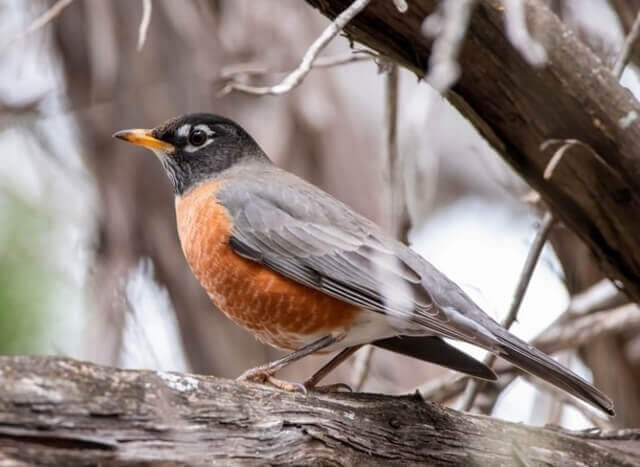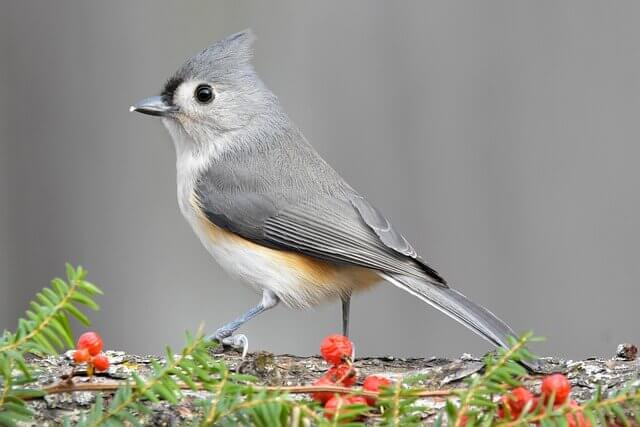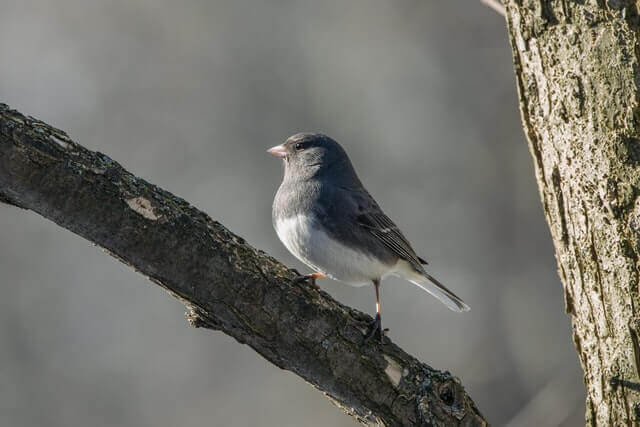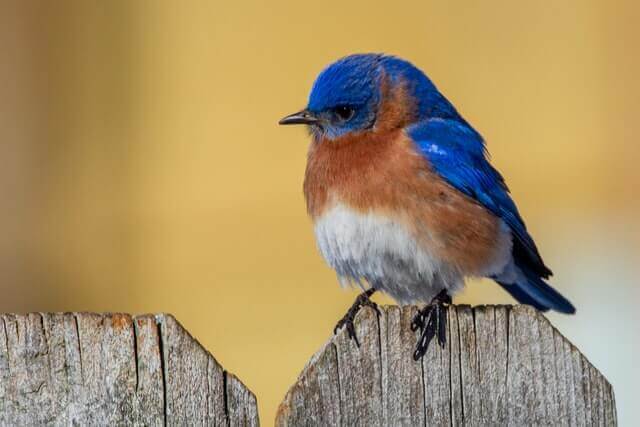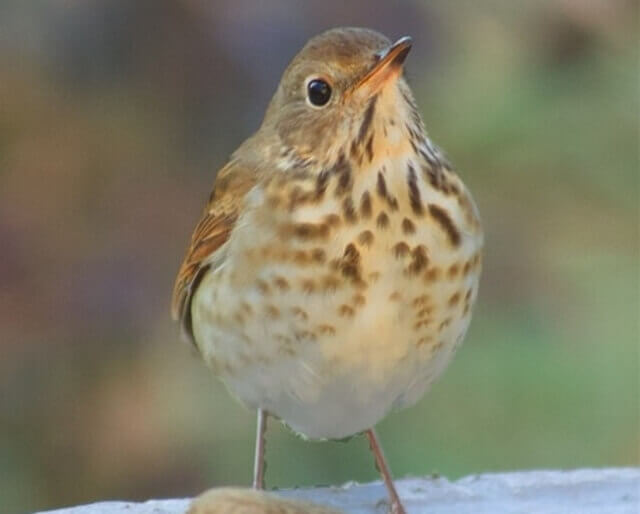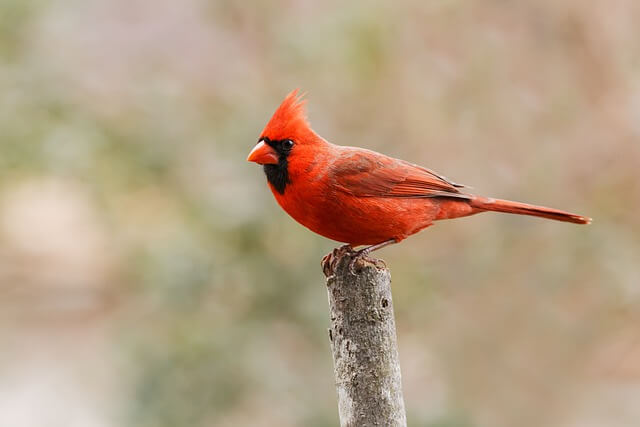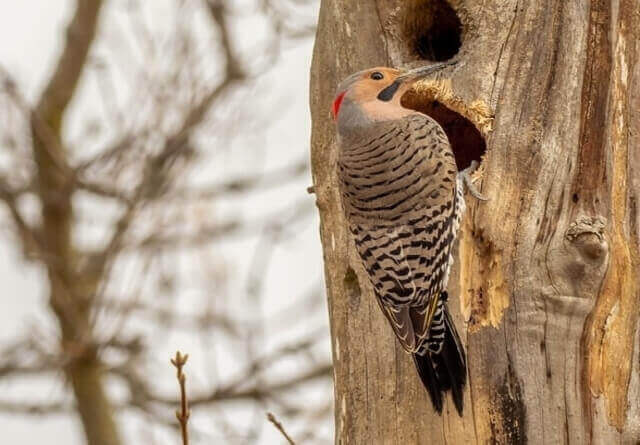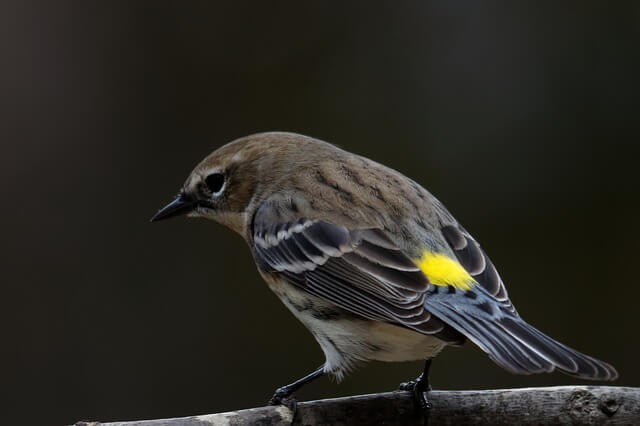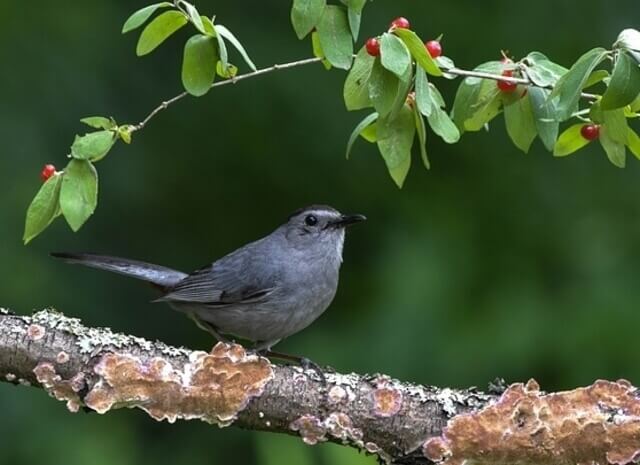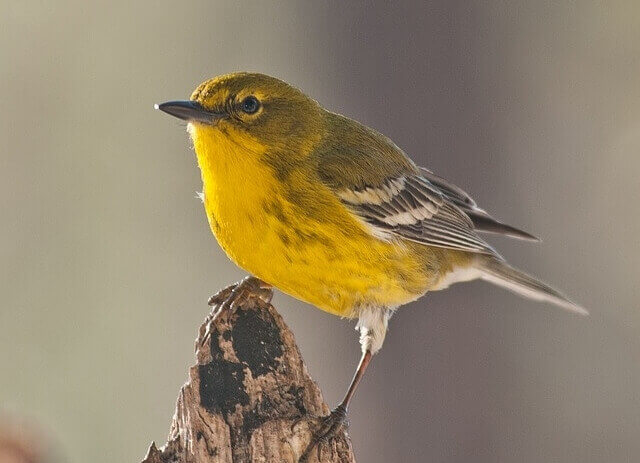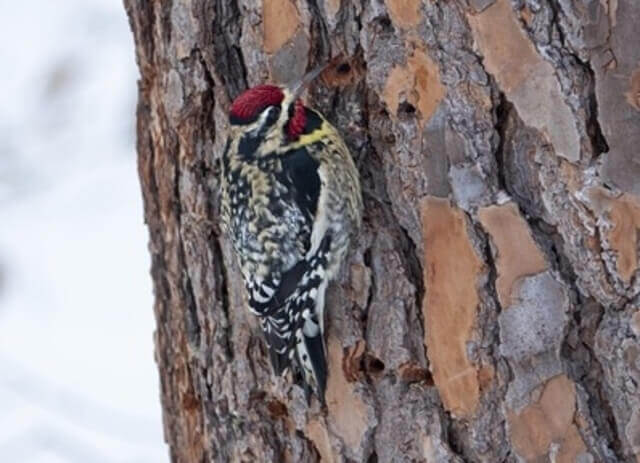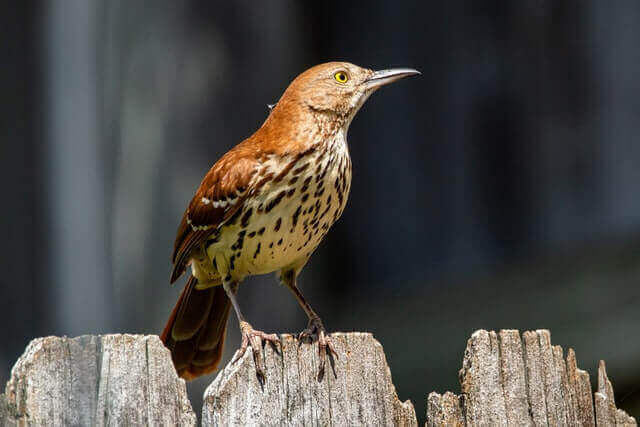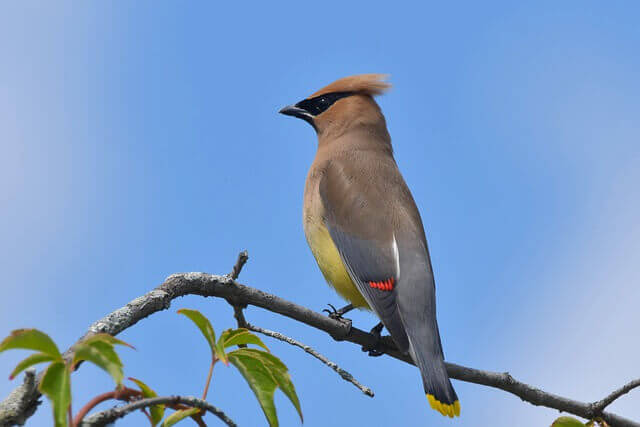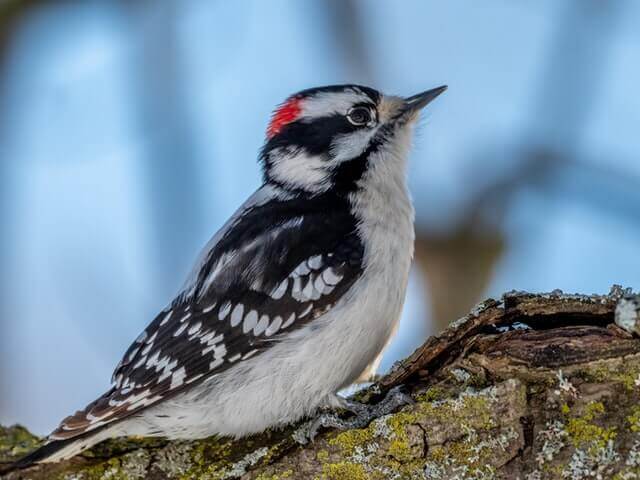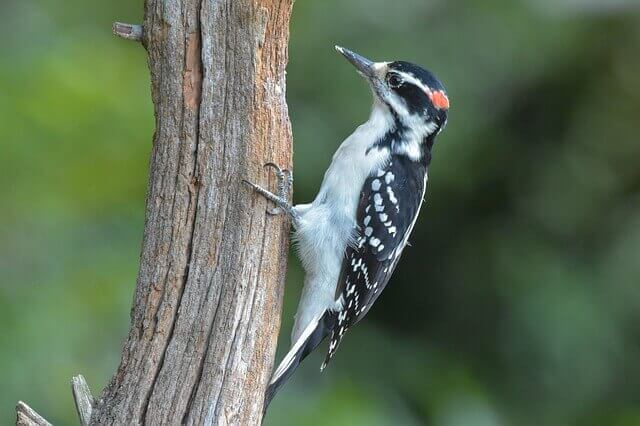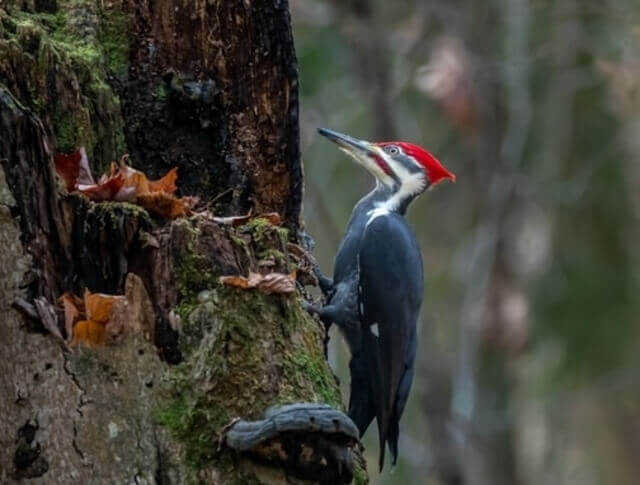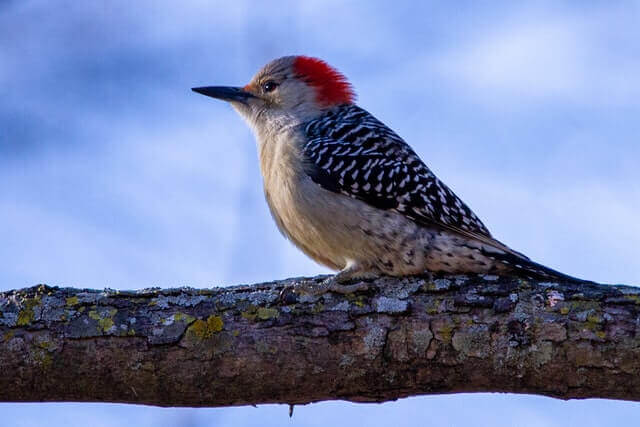The Dogwood tree, a captivating flowering beauty, adds charm to countless yards and communities across the United States. Remarkably, it stands as a vital source of sustenance for a variety of wildlife, including birds, deer, rabbits, squirrels, and chipmunks.
In this article, we delve into the fascinating world of 20 birds that eat dogwood berries. Explore their profiles with vivid photos and detailed information, gaining a deeper appreciation for these essential contributors to our ecosystem.
Table of Contents
- 1 Northern Mockingbird
- 2 American Robin
- 3 House Sparrow
- 4 Tufted Titmouse
- 5 Dark-eyed Junco
- 6 Eastern Bluebird
- 7 Hermit Thrush
- 8 Northern Cardinal
- 9 Northern Flicker
- 10 Yellow-rumped Warbler
- 11 Gray Catbird
- 12 Pine Warbler
- 13 Yellow-bellied Sapsucker
- 14 Brown Thrasher
- 15 Cedar Waxwing
- 16 Purple Finch
- 17 Downy Woodpecker
- 18 Hairy Woodpecker
- 19 Pileated Woodpecker
- 20 Red-bellied Woodpecker
- 21 Author
Northern Mockingbird
Northern Mockingbirds eat the berries of dogwood trees, which are a favorite food. Dogwoods provide nutrients and energy for birds to help them fly and survive in winter. Northern mockingbirds have been seen eating dogwood berries before flying south during cold weather.
- Length: 8.1-10.4 in (20.5-26.5 cm)
- Weight: 1.6-2.0 oz (45-59 g)
- Wingspan: 11.8-14.2 in (30-36 cm)
- Range: Eastern United States, Southern Canada, Mexico, and Central America.
- Habitat: Parks, yards, and rural areas.
- Diet: Insects, fruit and seeds.
American Robin
Many people think that American Robins only eat worms. But in reality, they are opportunistic feeders and will take any opportunity to get food. They are especially fond of dogwood berries. These friendly birds have different eating habits depending on what is available at the time.
- Length: 8.3-11.2 in (21-28.5 cm)
- Weight: 2.8-3.0 oz (78-86 g)
- Wingspan: 11.8-15.7 in (30-40 cm)
- Range: North-eastern United States to southern Canada and south to Central America.
- Habitat: Open woodlands, suburbs, parks, agricultural fields and brushy hillsides with scattered trees.
- Diet: Mainly insects, berries and other fruit.
House Sparrow
The House Sparrow is an opportunistic feeder, meaning it will take advantage of any food source that becomes available in its environment. It prefers insects, but when they’re not available, house sparrows will forage on whatever plant matter they can find, including seeds and fruits such as dogwood berries. They are attracted to the red color of the fruit and their high sugar content.
- Length: 5.7-7.1 in (14.5-18 cm)
- Weight: 0.92-1.1 oz (26-31 g)
- Wingspan: 7.9-10.0 in (20-25.5 cm)
- Range: Europe, Asia, Africa, North America and South America.
- Habitat: Open areas such as fields and parks.
- Diet: Insects, seeds, and food scraps.
Tufted Titmouse
Tufted Titmice are an insectivorous songbird that feeds on small insects and the seeds of trees. They have a distinctive tuft of feathers on their head, hence their name. It is also one of the most common backyard birds in North America, but do they eat Dogwood Berries? Tufted Titmice do feed on Dogwood Berries! In fact, dogwoods produce some berries specifically for them to eat because they rely heavily on these fruits as a major food source in the winter.
- Length: 5.4-6.4 in (13.7-16.3 cm)
- Weight: 0.6-0.9 oz (18-27 g)
- Wingspan: 7.9-10.6 in (20-27 cm)
- Range: Eastern half of North America, Mexico and Central America.
- Habitat: Forests, woodlands and suburban areas.
- Diet: Mainly of insects, nuts, seeds and berries.
Dark-eyed Junco
The Dark-eyed Junco is a medium-sized North American bird that inhabits deciduous and coniferous forests. They are predominantly seed-eaters, but they will also consume insects when they can find them. In late summer and early fall, the juncos feast on dogwood berries in order to prepare for winter; these berries provide a nutritious meal before hibernation. The juncos will flock together in an attempt to reach as many of the bright red fruits as possible.
- Length: 5.3-6.5 in (13.5-16.5 cm)
- Weight: 0.6-1.1 oz (17.5-31 g)
- Wingspan: 6.7-10.2 in (17-26 cm)
- Range: Common and found throughout most of North America except parts of central Canada and Alaska.
- Habitat: Forests, meadows, and other open habitats with brushy undergrowth.
- Diet: Insects, spiders, berries, seeds and nuts.
Eastern Bluebird
The Eastern Bluebird is a small, bright blue bird that can be found throughout the eastern United States and southeastern Canada in open woodlands, hedgerows, orchards, parks and other areas that provide trees for nesting. Eastern Bluebirds are omnivores; they eat both insects and fruit. The most common fruits eaten by Eastern Bluebirds include apples, berries (including dogwood), grapes, plums and cherries. In some cases, the berries are the only food source for Eastern Bluebirds during the winter.
- Length: 6.3-8.5 in (16-21.5 cm)
- Weight: 1.0-1.1 oz (28.5-32 g)
- Wingspan: 9.8-12.8 in (25-32.5 cm)
- Range: USA, Canada, Mexico.
- Habitat: Fields, forest edges, suburban yards with lots of trees or shrubs.
- Diet: Insects, caterpillars, spiders, fruit, berries, seeds and grains.
Hermit Thrush
Hermit thrushes are often seen in the forest or backyard bird feeders. The species is well-known for its sweet, high-pitched song and preference for dense understory vegetation such as dogwood trees. It may come as a surprise to some that they also eat the berries of these same trees. They will also consume other types of fruit including grapes, cherries, mulberries, and blueberries; however, their diet consists mostly of insects during breeding season.
- Length: 5.5-7.5 in (14-19 cm)
- Weight: 0.8-1.3 oz (22-38 g)
- Wingspan: 9.8-11.8 in (25-30 cm)
- Range: United States, Canada, Mexico, Greenland and northern Eurasia.
- Habitat: Dense forests to grasslands, including scrubland and agricultural areas.
- Diet: Insects, fruits and berries.
Northern Cardinal
Northern Cardinals are a beautiful, common bird found in many yards across the United States. They can be identified by their bright red feathers and black mask. It turns out that cardinals are omnivores, which means they will consume both plants and animals for food. They enjoy the fruit of the dogwood tree during their migration in springtime as well as when it’s in season throughout much of the year (except late summer).
- Length: 7.9-9.1 in (20-23 cm)
- Weight: 1.45-1.7 oz (41-48 g)
- Wingspan: 9.8-12.4 in (25-31.5 cm)
- Range: Eastern United States, Canada and Mexico.
- Habitat: Deciduous forests, coniferous forests, mixed woodlands, prairies, chaparral areas (shrubs), savannas (grassland with scattered trees), semi-deserts or deserts with scrubby vegetation and shrubs, and even sagebrush plains.
- Diet: Seeds, fruits, berries, insects and other small animals.
Northern Flicker
The Northern Flicker is a member of the woodpecker family. They are usually found in wooded areas, but can also be seen in residential neighborhoods or around creeks and streams. Northern Flickers are known for their predilection for eating Dogwood berries. They will eat them year-round, but during the winter months they do so exclusively because of the low availability of other food sources. When dogwoods produce fruit, the flicker may stay on one tree and gorge itself until it is full.
- Length: 11.0-12.6 in (28-32 cm)
- Weight: 3.9-5.7 oz (110-162 g)
- Wingspan: 16.5-20.5 in (42-52 cm)
- Range: Eastern Canada to the southwestern United States, Mexico, Central America, Costa Rica, Belize and Honduras.
- Habitat: Mixed deciduous forests with scattered oaks and other trees for nesting sites.
- Diet: Mainly of ants, grubs, beetles, larvae and spiders as well as seeds and berries.
Yellow-rumped Warbler
The Yellow-rumped Warbler is a small bird that can be found in most parts of North America. They typically reside in dense brush, trees, and woodlands, but are also seen around people’s homes. Dogwood berries are a favorite food of the Yellow-rumped Warbler. In winter, when there is little to eat, these berries provide valuable sustenance for birds who need extra energy to survive cold weather conditions.
- Length: 4.7-5.9 in (12-15 cm)
- Weight: 0.4-0.5 oz (12-14 g)
- Wingspan: 7.5-9.4 in (19-24 cm)
- Range: Eastern, Central United States during the spring, summer, and fall seasons. In winter they migrate to Southern Mexico, Guatemala, Belize, Honduras and Nicaragua.
- Habitat: Deciduous and coniferous forests, urban areas, wetlands and grasslands.
- Diet: Insects, seeds and berries.
Gray Catbird
Dogwood berries are one of the most common plant foods consumed by these birds in their spring migration period. The Gray Catbirds’ tendency to eat dogwood berries provides them with a good source of nutrition and energy as they fly from their wintering grounds to nesting sites across North America. Gray Catbirds have been known to consume a variety of plants, but it is the consumption of dogwood berries that has piqued the curiosity of many birdwatchers.
- Length: 8.3-9.6 in (21-24.5 cm)
- Weight: 0.8-2.0 oz (23-57 g)
- Wingspan: 8.7-12.0 in (22-30.5 cm)
- Range: Eastern United States includes southeastern Virginia, North Carolina, and central Florida.
- Habitat: Open woodlands near the edges of fields or brushy areas.
- Diet: Insects, seeds, berries and occasionally fruit.
Pine Warbler
The Pine Warbler is a small bird that can be found throughout the eastern United States, Canada, Mexico, Central America and northern South America. Pine Warblers migrate to warmer climates during the winter. During fall migration, they will stop and feed on dogwood berries along their route. This provides them with a good source of energy for their flight southward.
- Length: 5.1-5.9 in (13-15 cm)
- Weight: 0.3-0.5 oz (8-14.1 g)
- Wingspan: 7.5-9.4 in (19-24 cm)
- Range: Eastern United States and southeastern Canada.
- Habitat: Mixed forests, dense woodlands and brushy areas with plenty of shrubs or vines.
- Diet: Insects, berries and fruit, nectar from flowers and seeds.
Yellow-bellied Sapsucker
Yellow-bellied Sapsuckers are a small species of woodpecker that live in the Eastern United States. Yellow-bellied Sapsuckers, are primarily known for their habit of feeding on tree sap. However, these birds also eat the fruit of the dogwood trees that they frequent in the late summer months. The sapsucker will peck at the berries until it has enough to fill its stomach, then fly off to find another tree with more ripe berries.
- Length: 6.7-9.0 in (17-23 cm)
- Weight: 1.5-1.9 oz (42-55 g)
- Wingspan: 13.8-15.8 in (35-40 cm)
- Range: Eastern North America and Western North America.
- Habitat: Forests, shrublands, coniferous swamps, near wetlands, ponds or streams.
- Diet: Insects, tree sap, fruits and berries.
Brown Thrasher
Brown Thrashers are songbirds that have a distinctive, long, downward sloping bill. Brown Thrashers often eat berries and insects to supplement their diet during the fall. The brown thrasher can be found in Eastern North America and Central America, from Texas all the way up to Canada. This bird has an unusual habit of feeding on dogwood berries during late summer and early fall. During this time, they will also feed on other plants such as sumac, poison ivy, bay berry, and holly.
- Length: 8.8-11.8 in (22.5-30 cm)
- Weight: 2.1-3.1 oz (60-89 g)
- Wingspan: 11.4-12.8 in (29-32.5 cm)
- Range: North America, Central America, South America, and parts of Europe.
- Habitat: Deciduous forests, suburban areas.
- Diet: Insects, seeds, berries and fruit.
Cedar Waxwing
The Cedar Waxwing is a small songbird native to North America. They are primarily found in the eastern and western parts of the continent, though some migrate south for winter. These birds live year-round in areas with a mild climate, such as Florida or Southern California. During fall, they migrate to southern states from their northern homes, this is one of the best times to see them because they feast on berries exclusively from trees like dogwood and American Holly.
- Length: 5.5-7.1 in (14-18 cm)
- Weight: 1.1 oz (32 g)
- Wingspan: 8.3-11.8 in (21-30 cm)
- Range: Eastern United States and southern Canada.
- Habitat: Woodlands, suburbs, and parks with fruiting trees or shrubs nearby.
- Diet: Berries, fruit, insects, sap or honeydew.
Purple Finch
Purple finches are native to North America and inhabit all states east of the Rocky Mountains. They can be found in both rural and urban areas, often congregating on lawns or other open spaces with a variety of food sources. They migrate south for the winter, but in spring they return northward. In early fall, these birds feed on dogwood berries as their final food source before migrating south. In order to prepare for their long journey south, purple finches eat a lot of food during this time.
- Length: 4.7-6.3 in (11-16 cm)
- Weight: 0.6-1.2 oz (18-33 g)
- Wingspan: 8.7-10.4 in (22-26.5 cm)
- Range: Alaska to southern Texas and northern Mexico, including the Rocky Mountains and as far north as Newfoundland.
- Habitat: Forests, orchards, parks and gardens, but they also will visit open areas such as fields.
- Diet: Seeds, fruit, insects, larvae, eggs and other small invertebrates.
Downy Woodpecker
Downy Woodpeckers are one of the most common birds in North America. They often eat dogwood berries, but when do they? It turns out that Downy Woodpeckers have two periods where they will eat dogwood berries: late winter and early spring. This is because during these times, many other food sources become scarce for them.
- Length: 5.5-7.1 in (14-18 cm)
- Weight: 0.71-1.0 oz (20-29 g)
- Wingspan: 9.5-12.2 in (24-31 cm)
- Range: Eastern United States, Canada and parts of Central America.
- Habitat: Forests, backyards, and parks with wooded areas as well as large cities.
- Diet: Mainly of insects, but also include nuts, seeds and berries.
Hairy Woodpecker
Hairy Woodpeckers eat dogwood berries during the winter to survive. Most people would think that woodpeckers eat bugs and nuts all year round, but they actually have a large diet of dogwood berries in the winter. The berries give the woodpecker much needed sustenance, since these birds don’t eat any other food sources during this time of year. When there are no berries available, these birds will consume other food items such as insects or even tree sap.
- Length: 6.7-10.6 in (17-27 cm)
- Weight: 1.4-3.4 oz (40-96 g)
- Wingspan: 12.6-16.5 in (32-42 cm)
- Range: Southeastern United States up into Canada
- Habitat: Forested areas, near rivers and streams, and around farmlands.
- Diet: Insects, nuts, berries and seeds.
Pileated Woodpecker
Pileated Woodpeckers survive winter by eating dogwood berries. This type of woodpecker usually eats a diet consisting of tree sap, bugs, and fruit, but they need to supplement their diet with something else in the winter months when trees are dormant. Dogwood berries provide this necessary nutrient for them to survive the cold season.
- Length: 15.7-19.7 in (40-50 cm)
- Weight: 8.8-12.3 oz (250-350 g)
- Wingspan: 25.6-29.5 in (65-75 cm)
- Range: North America from Eastern Canada to Mexico.
- Habitat: Mature forests, mixed hardwood-coniferous forests, swamps, streamsides and canyons.
- Diet: Mostly insects such as ants, beetles, crickets and their larvae, however, they will also eat nuts from trees.
Red-bellied Woodpecker
In the winter, Red-bellied Woodpeckers feed on dogwood berries. These berries have a higher sugar content than many other types of food found in the forest during this time of year. This high sugar content provides energy for them to survive until spring when they can find insects and tree sap again.
- Length: 9.1-10.6 in (23-27 cm)
- Weight: 1.9-3.2 oz (55-91 g)
- Wingspan: 12.6-16.5 in (32-42 cm)
- Range: Southern Canada to Florida and as far west as Texas.
- Habitat: Deciduous forests as well as mixed forests with both hardwoods and conifers.
- Diet: Seeds, insects, spiders, fruits, berries and nectar.



